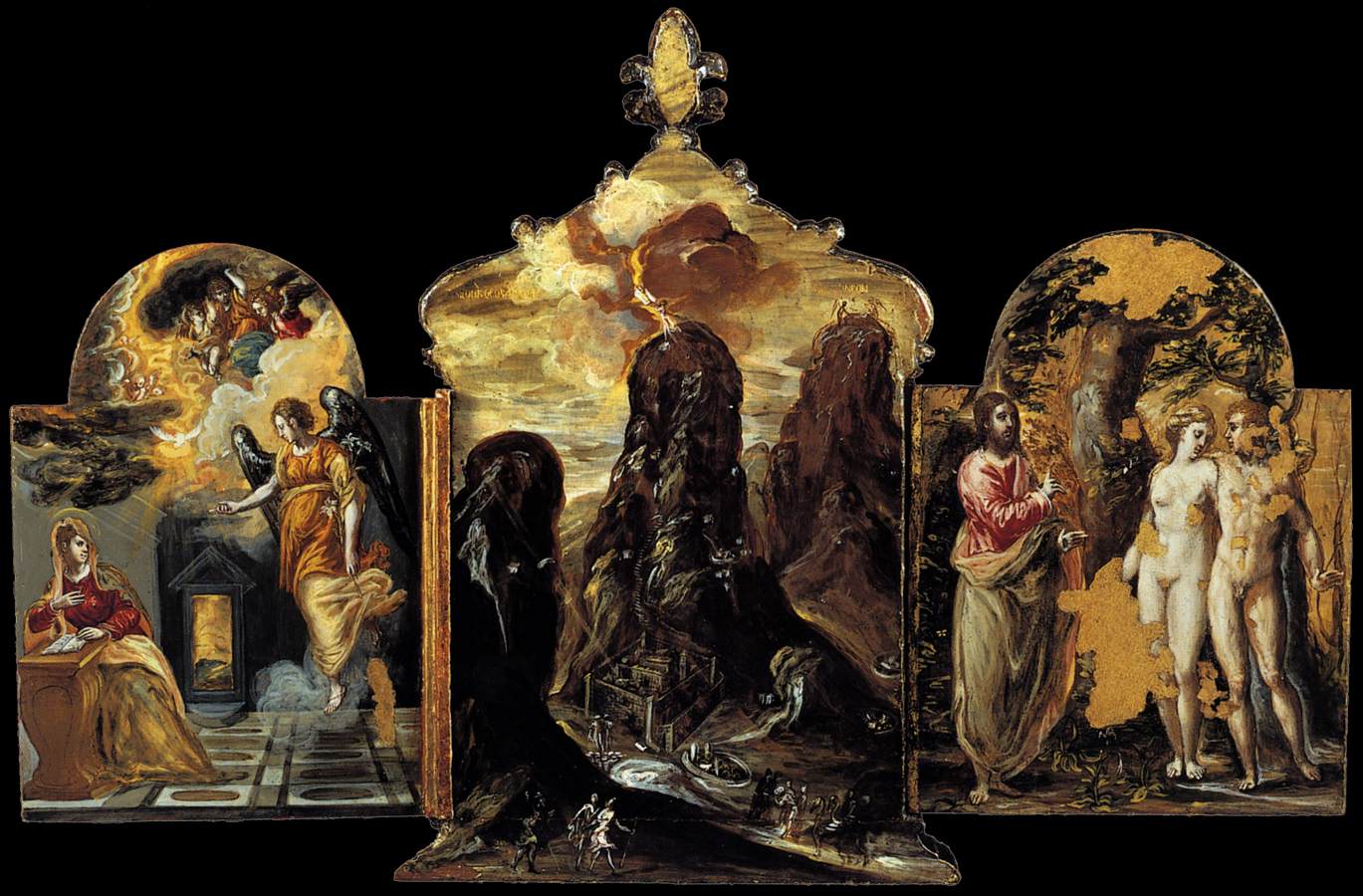Description
The Modena Triptych (back panels) is an intriguing piece of art created by the famous artist, El Greco. This painting is a part of a larger triptych that was commissioned by the Duke of Modena, Francesco I d'Este, in the late 16th century. The back panels of the triptych depict Saint John the Evangelist and Saint John the Baptist, both of whom were important figures in Christianity.
One of the most interesting aspects of this painting is El Greco's unique style of painting. He was known for his elongated figures and use of vibrant colors, which are both evident in this painting. The figures of the saints are elongated and almost seem to be stretching upwards towards the heavens. The use of bold colors, such as the bright reds and blues, adds to the dramatic effect of the painting.
The composition of the painting is also noteworthy. The two figures are placed in a diagonal line, with Saint John the Evangelist on the left and Saint John the Baptist on the right. This creates a sense of movement and energy, as if the figures are in motion. The use of light and shadow also adds to the dynamic quality of the painting.
The history of the painting is also fascinating. It was originally a part of a larger triptych that was commissioned by the Duke of Modena. However, the triptych was later broken up and the individual panels were sold off. The back panels of the triptych were eventually acquired by the Metropolitan Museum of Art in New York City.
Despite its significance, The Modena Triptych (back panels) is not as well-known as some of El Greco's other works. However, it is a beautiful and powerful painting that showcases the artist's unique style and skill.

